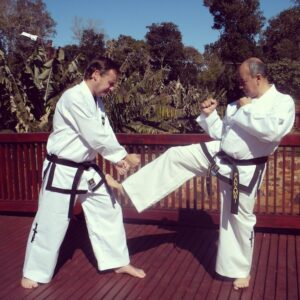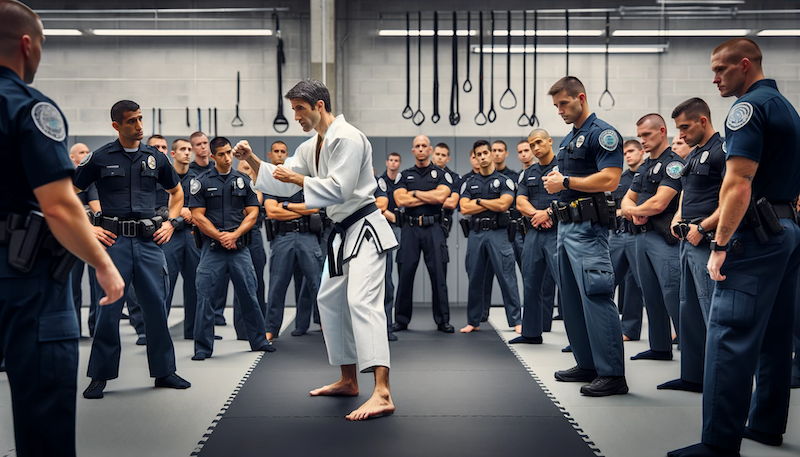
Law enforcement officers face unique challenges that require mental acuity, physical prowess, and self-defense skills.
The ability to control and restrain aggressors safely and effectively is crucial in their line of duty. This is where martial arts training becomes invaluable.
The right kind of martial arts can equip officers with the necessary skills to handle confrontations, minimize harm to themselves and others, and effectively manage various situations.
In this article, we explore the 5 best martial arts for law enforcement, considering their relevance to the demands of police work.
Contents
5 Best Martial Arts for Police Officers (Law Enforcement)
The five best martial arts for law enforcement are:
- Krav Maga
- Judo
- Wrestling
- Brazilian Jiu-Jitsu (BJJ)
- Kali/Escrima
These martial arts are best because they teach police officers essential skills for controlling and restraining aggressors in close quarters, which is vital for cuffing an aggressor and limiting damage to both the officer and the aggressor.
Let’s take a look at each of these martial arts, explaining both their pros and cons for law enforcement.
1. Krav Maga
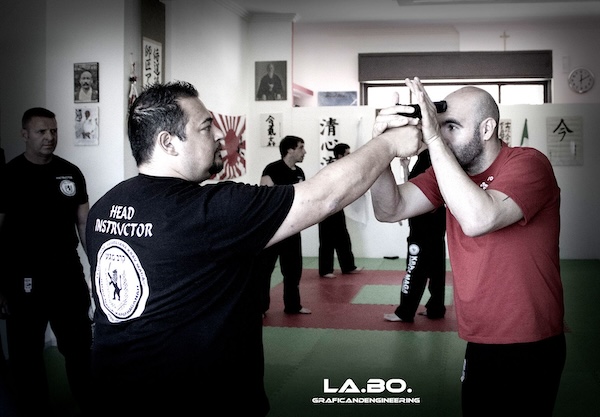
Krav Maga, developed in the late 1940s and early 1950s, is a practical and tactical system created for the Israeli Defense Forces (IDF).
It’s a martial art that emphasizes real-world situations and extreme efficiency, combining techniques from boxing, wrestling, judo, and aikido.
The primary goal of Krav Maga is to neutralize threats quickly and effectively, making it a preferred choice for self-defense and combat training.
Krav Maga has been adopted by various law enforcement agencies and military units worldwide, including in the United States, Europe, and other regions.
Why Krav Maga Is Good for Law Enforcement
- Realistic Self-Defense: Focuses on practical techniques effective in real-life confrontations.
- Dealing with Multiple Attackers: Trains officers to handle situations involving multiple aggressors.
- Weapon Defense: Includes techniques for disarming and neutralizing armed attackers.
- Mental Toughness: Develops the ability to stay calm and make rational decisions under pressure.
The Negatives of Krav Maga for Law Enforcement
- Limited Sparring: Less emphasis on live training and sparring can lead to a gap in experience in real confrontations. Make sure to train at a Krav Maga academy that emphasizes sparring and live training.
- Inconsistent Quality: The quality and intensity of training can vary significantly between schools. Law enforcement should always seek the best, regardless of price.
- Less Emphasis on Ground Control: Krav Maga provides less extensive training in ground control techniques compared to martial arts like Brazilian jiu-jitsu, judo, or wrestling. This could be a limitation in law enforcement scenarios where controlling a suspect on the ground is necessary for an extended period.
2. Judo
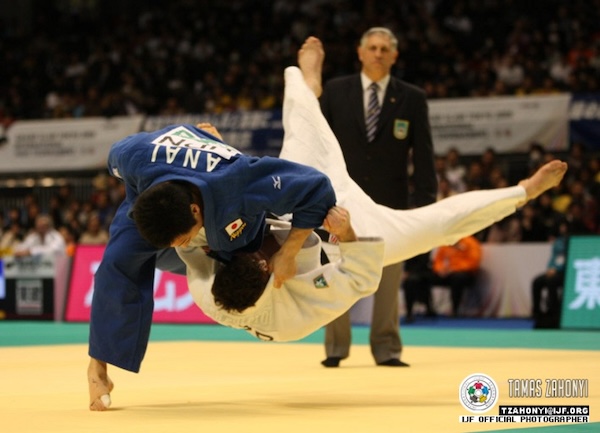
Judo, developed in Japan in 1882 by Jigoro Kano, is a martial art that emphasizes throws, takedowns, and both standing and ground control.
It includes techniques for subduing an opponent using joint locks and chokes, applicable in both standing and ground positions.
This discipline is particularly relevant for law enforcement, focusing on balance, leverage, and efficient use of force.
Judo’s techniques are designed for safely controlling a suspect, aligning well with law enforcement’s need for non-lethal methods.
Why Judo Is Good for Law Enforcement
- Effective Restraint Techniques: Ideal for controlling and neutralizing suspects with minimal harm, using throws, joint locks, and chokes.
- Standing and Ground Control: Offers versatile control options, whether the confrontation is standing or on the ground.
- Leverage Over Strength: Emphasizes technique over brute force, beneficial against larger opponents.
- Improved Physical Fitness: Regular judo training enhances an officer’s overall physical condition, including strength, flexibility, and endurance.
The Negatives of Judo for Law Enforcement
- Lack of Striking Defense: Judo doesn’t include training in defending against strikes, which can be a limitation in confrontations with aggressive suspects.
- No Weapon Defense Training: Judo doesn’t cover defense against armed attackers, a scenario that law enforcement officers may frequently encounter.
3. Wrestling

Wrestling, one of the oldest forms of combat, involves techniques focused on clinch fighting, takedowns, throws, and controlling an opponent on the ground.
It’s a sport that emphasizes physical dominance without striking, making it a valuable skill for law enforcement.
Wrestling’s emphasis on leverage, positioning, and control is particularly beneficial for police work, where safely subduing a suspect is often necessary.
Wrestling is by far the best martial art for law enforcement in getting an aggressor to the ground and controlling them. Judo is a close second.
Why Wrestling Is Good for Law Enforcement
- Dominant Control Techniques: Wrestling teaches how to gain and maintain control over a suspect, which is crucial for safe apprehension.
- Effective Takedowns: The ability to take a suspect to the ground safely and efficiently can be vital in many arrest scenarios.
- Physical Conditioning and Strength: Regular wrestling practice enhances strength, agility, and endurance, all of which are important for the physical demands of police work.
- Non-Striking Approach: Wrestling focuses on control without striking, aligning with law enforcement policies that emphasize minimal harm.
- Ground Control: Offers techniques for maintaining control in ground situations, essential for situations where officers find themselves in close quarters with a suspect.
- Mental Toughness: Builds resilience and the ability to remain calm and focused in physically demanding situations.
The Negatives of Wrestling for Law Enforcement
- Lack of Striking Defense: Wrestling doesn’t include training in defending against strikes, which can be a limitation in confrontations with aggressive suspects.
- No Weapon Defense Training: It doesn’t cover defense against armed attackers, a scenario that law enforcement officers may frequently encounter.
4. Kali/Eskrima
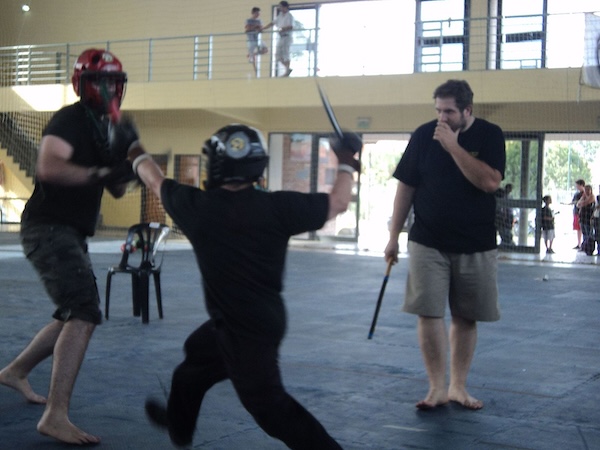
Kali, also known as Eskrima or Arnis, is a Filipino martial art known for its emphasis on weapon-based fighting, particularly sticks and knives, as well as open-hand techniques.
It encompasses a comprehensive skill set that includes striking, grappling, and weapon handling, making it highly adaptable to various combat scenarios.
Kali teaches empty-hand techniques and transitions between armed and unarmed combat, providing a versatile approach to self-defense and combat situations.
Why Kali/Eskrima Is Good for Law Enforcement
- Weapons Proficiency: Offers extensive training in both using and defending against weapons, crucial for law enforcement officers who might encounter armed suspects.
- Improves Disarming Skills: Kali is particularly effective in teaching how to disarm an attacker, a valuable skill in situations where officers face threats from armed individuals.
- Adaptability in Combat: Techniques can be applied against aggressors with or without weapons, and close-quarter situations, making it highly adaptable for law enforcement needs.
- Striking and Grappling Skills: Covers a wide range of skills, providing officers with both striking and grappling techniques, both offensively and defensively.
- Enhanced Reflexes and Coordination: Training in Kali improves hand-eye coordination, reflexes, and situational awareness, essential attributes for law enforcement officers.
- Real-World Application: Focuses on practical and efficient self-defense techniques that can be applied in real-life situations, including disarming and neutralizing threats.
The Negatives of Kali/Eskrima for Law Enforcement
- Complexity of Techniques: The wide range of techniques in Kali/Eskrima can be complex and may require significant time to master effectively.
- Less Emphasis on Ground Control: While it offers a comprehensive set of standing combat skills, Kali/Eskrima teaches limited ground control techniques compared to Bjj, judo, or wrestling.
- Risk of Over-Reliance on Weapons: There’s a potential risk that training with a focus on weapons might lead to an over-reliance on them, which could be a concern in situations where de-escalation is preferred.
5. Brazilian Jiu-Jitsu (BJJ)
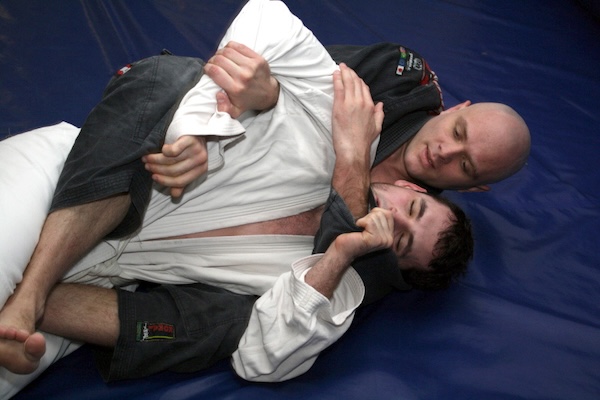
Brazilian jiu-jitsu, developed in Brazil in the early 20th century, is a martial art focusing on ground fighting and submission techniques.
Bjj evolved from the Japanese martial art of judo and has become renowned for its effectiveness in grappling and control on the ground.
Bjj is particularly known for its emphasis on technique and leverage, allowing a smaller person to defend against and control a larger opponent, which is a significant advantage in law enforcement scenarios, especially for female officers.
Why Brazilian Jiu-Jitsu Is Good for Law Enforcement
- Excellent Ground Control: Bjj provides extensive techniques for controlling an opponent on the ground, an essential skill in situations where a confrontation goes to the ground.
- Effective Submissions: Teaches various chokes and joint locks that can be used to subdue and restrain a suspect safely and effectively. These submissions can be used to hurt an aggressor if need be.
- Leverage and Technique Over Strength: Bjj’s focus on leverage and technique rather than brute strength is particularly useful for officers who may face larger or stronger suspects.
- Defensive Capabilities: Offers defensive techniques against ground attacks, enhancing an officer’s ability to protect themselves in close-quarters situations.
- Complements Other Martial Arts: Bjj can be a valuable addition to the skill set provided by stand-up focused martial arts like Krav Maga or judo.
The Negatives of Brazilian Jiu-Jitsu for Law Enforcement
- Less Emphasis on Stand-Up Grappling: Bjj primarily focuses on ground fighting, with less emphasis on the stand-up aspects of a confrontation, which are also crucial in law enforcement. To combat this, law enforcement officers should only train Bjj where takedowns and takedown defense are taught.
- Potential Over-Reliance on Ground Techniques: There’s a risk of over-reliance on ground-fighting, especially if said police officer is lacking takedown skills, or when going to the ground is disadvantageous in certain law enforcement scenarios.
- Time to Proficiency: Gaining proficiency in Bjj, especially to the level of effectively controlling and subduing resisting suspects, can take a significant amount of time, even many years.
- Lack of Striking Defense: Bjj doesn’t include training in defending against strikes, which can be a limitation in confrontations with aggressive suspects.
- No Weapon Defense Training: Bjj doesn’t cover defense against armed attackers, a scenario that law enforcement officers may frequently encounter.
The Bottom Line
In summarizing the 5 best martial arts for law enforcement – Krav Maga, judo, wrestling, Brazilian jiu-jitsu, and kali – it’s evident that each offers unique strengths crucial for the diverse challenges faced by law enforcement officers.
However, it’s also clear that no single martial art covers all aspects of law enforcement needs comprehensively.
A common thread in the limitations of these martial arts, particularly the grappling-focused styles like judo, wrestling, and Bjj, is their lack of emphasis on critical aspects such as defense against weapons and striking.
These martial arts excel in ground control and submission techniques, offering unparalleled skills in subduing and controlling an aggressor, but they may fall short in scenarios involving armed assailants or where maintaining distance and striking defense is crucial.
On the other hand, more well-rounded arts like Krav Maga and Kali, while providing extensive training in weapons, self-defense, and real-life threatening scenarios, including striking and striking defense, don’t offer the same depth in grappling techniques as the other three.
This gap is significant in law enforcement, where ground control and the ability to safely subdue a suspect without resorting to lethal force are often required.
Therefore, a combination of these martial arts is recommended for a well-rounded law enforcement training program.
For instance, pairing Krav Maga with wrestling and Bjj would cover a wide range of skills – from weapon defense and realistic self-defense scenarios to effective ground control and submission techniques.
Alternatively, combining judo and Kali could provide officers with robust skills in both stand-up and ground control, along with weapon handling and striking defense.
By training in a combination of these martial arts, law enforcement officers can ensure they are well-prepared for a variety of situations.
This comprehensive skill set is crucial for modern law enforcement, where officers must be prepared for anything from hand-to-hand combat to dealing with armed suspects, all while minimizing harm and ensuring public safety.




